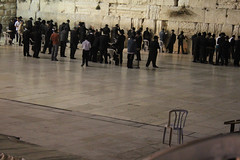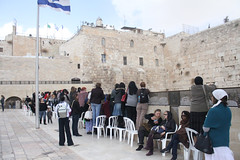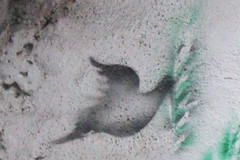 Today, 27 January, is International Holocaust Memorial Day, commemorating the day in 1945 that Allied troops captured the Auschwitz concentration camp. This painting was Jan’s initial response to our visit to the Yad Vashem Holocaust Memorial Centre in Jerusalem. See the post she has written today on her Jubilación blog.
Sun 1 Nov
Today, 27 January, is International Holocaust Memorial Day, commemorating the day in 1945 that Allied troops captured the Auschwitz concentration camp. This painting was Jan’s initial response to our visit to the Yad Vashem Holocaust Memorial Centre in Jerusalem. See the post she has written today on her Jubilación blog.
Sun 1 Nov
Yad Vashem is truly shocking.
The Memorial Centre commemorates the 6 million Jews who were murdered by the Nazis in the biggest, most organised and most cynical attempt at mass extermination in human history.
The existence of the concentration camps, and the full horror of what they had been used for, only became apparent to the rest of the world in the last few months of the war as the Allies captured them one by one, and discovered the incinerators, the mass graves and the few helpless survivors. The memorial centre documents Jewish life in western, central and eastern Europe through the centuries, up to and including the Nazi régime.
From 1933 onwards the Nazis brought in measures banning Jews from the professions, from public office, from publishing, from commerce, and from education. They encouraged violent attacks on Jewish people and property including public beatings and humiliations and the burning of homes, shops and synagogues. They forced Jews to wear an identifying yellow star, forced them out of their homes and crammed them into ghettos, confiscated their property, then deported them to forced labour camps and concentration camps and finally murdered hundreds of thousands if not millions in gas chambers.
So Yad Vashem, which documents all this, is truly shocking.
The visit
The Centre displays original pieces such as photographs, letters and personal items such as clothing, which are particularly touching because they relate to individual, often named people. It also reconstructs a number of scenes including ghetto streets, the cattle trucks in which people were transported to the camps, the bunks in which people were crammed 3 to a bunk 3 tiers high. All bar one or two items in the Centre use original materials, so you walk down a reconstructed Warsaw Ghetto street, and you stand before one of the cattle trucks and try to imagine how hundreds of people could have been forced into it and shunted off to certain death.
The most affecting part for me was the final area, the Hall of Names, where, after you have seen the exhibits and reconstructions, read the panels and listened to the guide, you enter a domed hall in which the names of all known victims of the Holocaust are recorded, hundreds of photographs are displayed, and files kept documenting what happened to at least some of them. Looking at the photos here and elsewhere in the Centre, I kept seeing myself in the little boys and young men, and my parents, grandparents, uncles and aunts - sometimes it would be a likeness, with others it would be the look in a person's eyes, or the pose they struck. It could have been me; it could have been us.
The Centre houses an enormous amount of material, and the guide very sensitively took us round a selection of exhibits for the best part of two hours, explaining and answering questions in a very straightforward manner. For some members of our group it was the first time they had been in a position in which they had had to confront such horrors.
Amongst other visitors while we were there we noted two groups of people in their late teens or early twenties - a group of Arab (Palestinian?) students, and a group of Israeli soldiers in uniform; the members of both of these groups looked and sounded as numbed and shocked as we did.
As for myself, I had visited Buchenwald and Majdanek concentration camps on visits to Germany and Poland when I was their age, in the 1960s; I cried then and I cried again at Yad Vashem.
Responses
I found myself responding on several levels, both during and after the visit. Each brought up an array of unanswerable questions.
First and foremost, as a human being - how could human beings inflict such suffering on other human beings? How could they justify their actions to themselves? How could thousands of other, seemingly normal, people, be persuaded to carry out these atrocities? What religious creed could sanction them? How could millions of other, supposedly sane, members of that society tolerate what was going on? How could they possibly not know what was going on? If they did know, how could they live with their consciences?
Then, as a Jew, born in England during the war - what if I had been born elsewhere? In Germany, say? How can a persecuted group respond to such persecution? Could this have happened in the UK? How does all this affect my own sense of Jewish identity?
Finally, as the particular individual that I am - what happened in the areas of eastern Poland and Belarus from which my grandparents came to the UK over 100 years ago? Were any members of my family still there during the years of occupation and war? What happened to them? Did they survive? Where are they now? How can I find them?
And underlying all of these questions the one inescapable, fearful thought: it could have been me. It could have been us.
--------------------------
NB: The Yad Vashem website has an enormous collection of information and documents on the Holocaust, including images and media items, which hugely extends the range of material available in the Centre itself.








